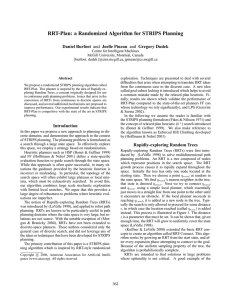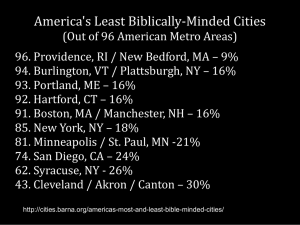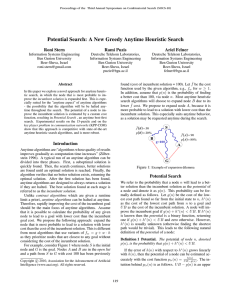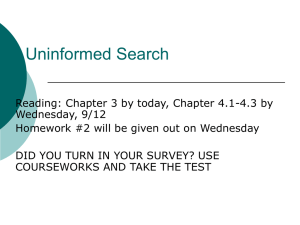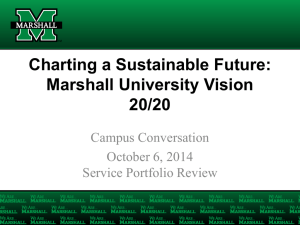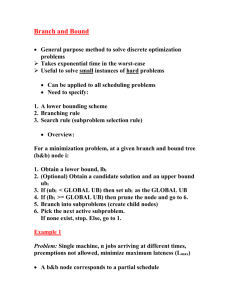Anytime RRTs
advertisement
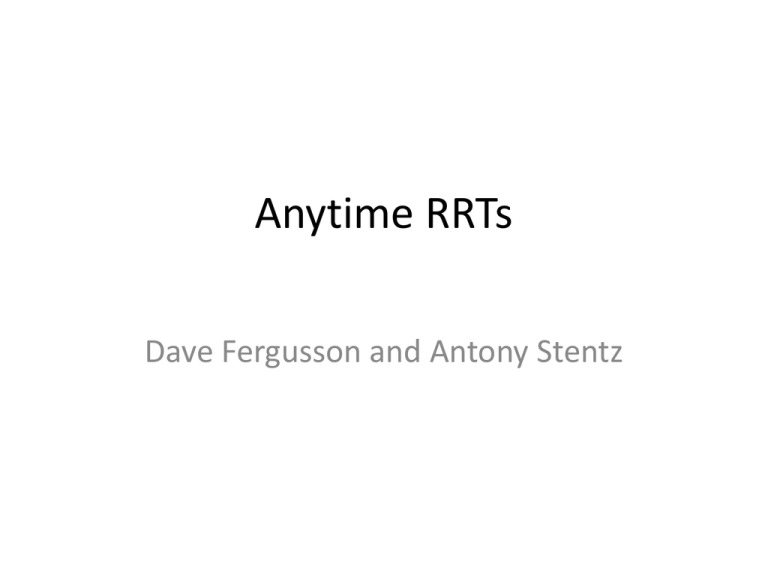
Anytime RRTs Dave Fergusson and Antony Stentz RRT – Rapidly Exploring Random Trees • • • • Good at complex configuration spaces Efficient at providing “feasible” solutions No control over solution quality Does not pay attention to solution cost Earlier Improvements • Can add a goal bias – makes it a best-first search • Nearest Neighbor could look for k-nearest neighbors (Urmson and Simmons) and select: – Qnearest to Qtarget where path-cost< r – First of k-nodes ordered by estimated path-cost whose current path-cost < r – Node with minimum estimated path cost where cost < r An idea from ARA* • Get an initial suboptimal solution to an inflated A* search with a highly suboptimality bound ε • Repeat running new searches with decreasing values of ε • After each search, cost of most recent solution is guaranteed to be at most ε times the cost of an optimal solution Anytime RRT algorithm Algorithm contd… Anytime RRT planning • RRT being grown from initial configuration to goal configuration Node Sampling • Only areas that can potentially lead to an improved solution are considered • Uses a heuristic function to restrict search Node Selection • Order by distance from the sample point and cost of their path from start node • Select node with path cost lower than others Extending tree • Generate a set of possible extensions • Choose extension which is cheapest among these Accepting new elements • Check if sum of cost of path from start node through tree to new element and heuristic cost of path to goal is less than solution bound • If “yes” add element to the tree Single Robot planning with Anytime RRTs Resulting Paths On avg 3.6 times better Multi-robot Constrained exploration On avg 2.8 times better Comparison of Relative Cost vs. Time Average relative solution cost for single robot Average relative solution cost for multiple robots

